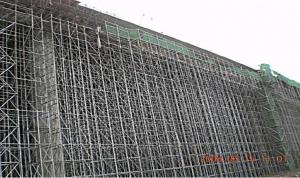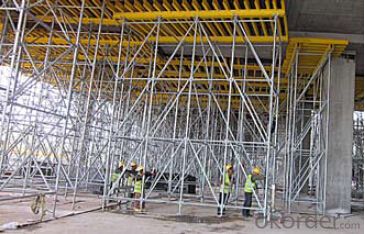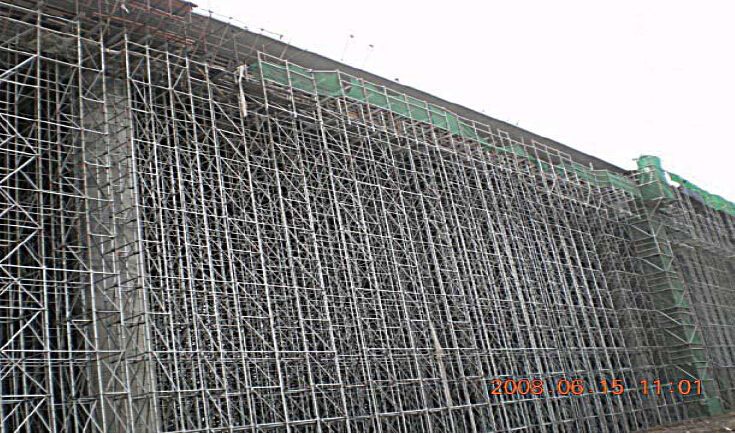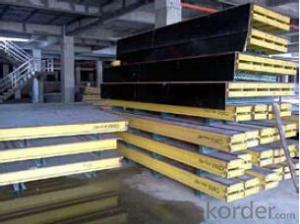Tower Scaffolding for Formwork and Scaffolding Build
- Loading Port:
- Tianjin
- Payment Terms:
- TT OR LC
- Min Order Qty:
- 50 m²
- Supply Capability:
- 1000 m²/month
OKorder Service Pledge
Quality Product, Order Online Tracking, Timely Delivery
OKorder Financial Service
Credit Rating, Credit Services, Credit Purchasing
You Might Also Like
Tower Scaffolding
Shoring tower is an effective supporting system. It is easy to assemble and dismantlement, and
has excellent stability and bearing capacity. It has been widely used in the construction of industry
& residential buildings , bridges, tunnels and dam project, etc.
Characteristics:
◆ High degree of standardization.
◆ Easy storage and transportation
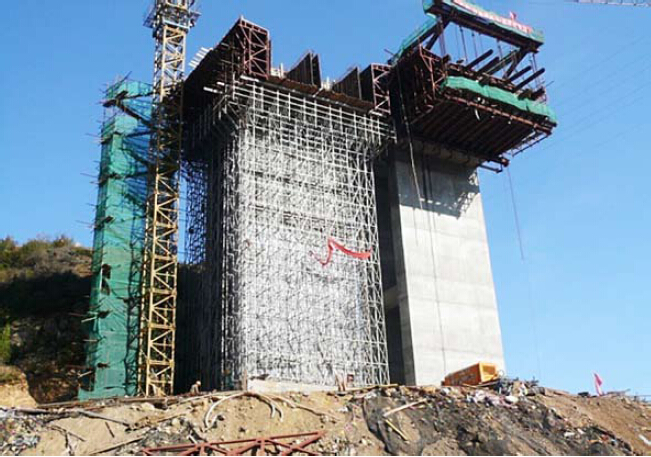
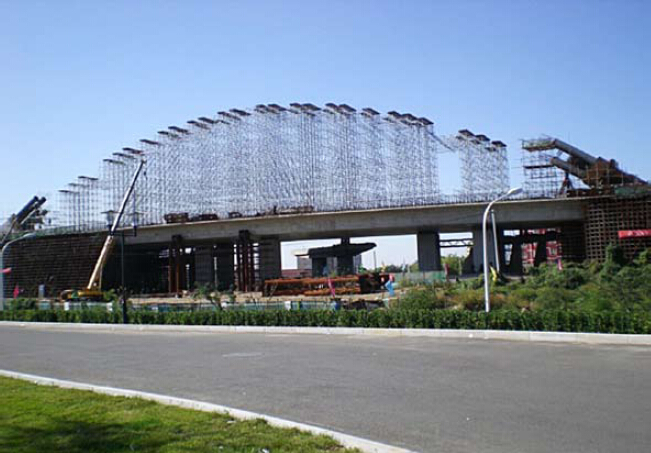
- Q: Can steel formwork be used for both straight and curved concrete elements?
- Yes, steel formwork can be used for both straight and curved concrete elements. Steel formwork is highly versatile and can be easily adapted to different shapes and sizes. It provides a strong and durable framework that can withstand the pressure of the concrete, allowing for the creation of both straight and curved structures.
- Q: How does steel formwork handle concrete setting time and curing temperature?
- Due to its exceptional heat transfer properties and durability, steel formwork is highly preferred for managing the concrete setting time and curing temperature. The excellent heat conduction of steel aids in dissipating the heat produced during the hydration process of concrete, thereby expediting its setting time. This enables a quicker construction process and reduces the overall project duration. Moreover, steel formwork possesses the capability to endure elevated curing temperatures without distorting or deteriorating. This becomes particularly crucial in situations where high-temperature curing is necessary to attain the desired strength and durability of the concrete. Steel's resilience against high temperatures guarantees that the formwork remains intact and steady, providing essential support to the concrete throughout the curing process. Additionally, the strength and rigidity of steel formwork prevent any deformation or movement during the concrete setting and curing phases. This plays a vital role in maintaining the desired shape, size, and surface finish of the concrete structure. By employing steel formwork, the concrete remains securely in place and avoids any undesirable shifts or displacements during the curing process. In conclusion, steel formwork is an optimal choice for managing concrete setting time and curing temperature due to its exceptional heat transfer properties, ability to withstand high temperatures, and its strength and rigidity. Its utilization facilitates accelerated setting times, enables high-temperature curing, and guarantees the stability and integrity of the concrete structure during the curing process.
- Q: Can steel formwork be used for curved or non-standard concrete shapes?
- Indeed, curved or non-standard concrete shapes can be achieved using steel formwork. The versatility of steel as a material allows for its effortless manipulation into various forms. This quality makes it particularly suitable for creating concrete structures with unique and intricate designs. Unlike traditional wooden formwork, steel formwork can be easily bent, twisted, or shaped to accommodate any desired curvature or non-standard shape. Furthermore, steel formwork offers exceptional strength and durability, ensuring its ability to withstand the immense pressure exerted by the concrete during pouring and curing. Consequently, steel formwork is widely employed in construction projects necessitating curved or non-standard concrete shapes, including architectural features, decorative elements, and complex structural components.
- Q: How does steel formwork handle concrete surface blemishes?
- Steel formwork is a popular choice in construction projects because of its durability and strength. It offers several advantages when it comes to dealing with concrete surface blemishes. To begin with, the smooth and rigid surface of steel formwork helps minimize the occurrence of surface blemishes on the concrete. Unlike timber or other formwork materials that may warp or deform easily, steel maintains a consistent and even surface for pouring the concrete. This reduces the chances of imperfections like air pockets, formwork marks, or uneven textures. Furthermore, steel formwork allows for precise control over the concrete pouring process. The panels are manufactured with high precision, ensuring accurate dimensions and alignment. Tight joints and connections between the panels further minimize the likelihood of concrete seepage or leakage, which can cause blemishes such as honeycombing or efflorescence. Moreover, steel formwork is easy to clean and maintain, which helps prevent or handle concrete surface blemishes. The smooth surface allows for easy removal of excess concrete or debris that may accumulate during pouring. This prevents the formation of unwanted blemishes and preserves the quality of the concrete surface. In situations where concrete surface blemishes do occur, steel formwork has the advantage of being reusable. Unlike other formwork materials that may need to be discarded after a single use, steel formwork can be easily cleaned, repaired, and used again for multiple projects. This provides more control over the quality of the formwork, reducing the risk of surface blemishes in subsequent concrete pours. In conclusion, steel formwork effectively handles concrete surface blemishes by providing a smooth and rigid surface, precise control over the pouring process, easy maintenance and cleaning, and reusability. These features contribute to achieving a high-quality concrete surface with minimal blemishes, ensuring an aesthetically pleasing and structurally sound end result.
- Q: Is steel formwork more expensive than other types of formwork?
- Yes, steel formwork is generally more expensive than other types of formwork. Steel is a durable and strong material, making it a preferred choice for construction projects. However, its higher cost compared to alternatives such as wood or plastic formwork can be attributed to the higher manufacturing and material costs associated with steel.
- Q: How does steel formwork affect the overall energy efficiency of a structure?
- Steel formwork can significantly improve the overall energy efficiency of a structure. It provides a durable and reusable framework for concrete pouring, reducing material waste and construction time. The precise fit of steel formwork minimizes the need for additional insulation, resulting in better thermal performance and reduced energy consumption for heating and cooling. Additionally, its strength and stability allow for the construction of thinner walls and slabs, maximizing the usable space and minimizing the amount of materials required. Thus, steel formwork positively impacts the energy efficiency of a structure by reducing energy consumption and promoting sustainable construction practices.
- Q: How does steel formwork contribute to the overall stability of a structure?
- The construction industry greatly relies on steel formwork to ensure the stability of structures. This crucial component is extensively used for casting concrete elements like walls, slabs, columns, and beams. Steel formwork enhances stability by providing a rigid and robust framework for pouring and setting concrete. The steel panels and frames are designed to withstand the pressure exerted by wet concrete, preventing deformation during the curing process. This prevents any potential structural deficiencies or unevenness that may compromise stability. Moreover, steel formwork offers exceptional strength and durability, making it suitable for various construction projects. Its high tensile strength enables it to bear heavy loads, which is especially important for large-scale structures. Additionally, the formwork's strength allows for multiple reuses, reducing construction costs and environmental impact. Furthermore, steel formwork ensures excellent dimensional stability, maintaining its shape and dimensions throughout the construction process. This characteristic is crucial for structural accuracy and consistency. Additionally, steel formwork is highly resistant to moisture and other environmental factors that can affect stability. Its corrosion-resistant properties make it suitable for outdoor construction sites exposed to rain, humidity, and other elements. This resistance to corrosion ensures the formwork's integrity over time, contributing to the long-term stability of the structure. In conclusion, steel formwork plays a vital role in enhancing the stability of structures. Its rigid and robust framework, combined with its strength, durability, dimensional stability, and resistance to environmental factors, ensures proper concrete formation and structural integrity. By providing a stable foundation for the construction process, steel formwork significantly contributes to the stability and safety of the final structure.
- Q: Is steel formwork suitable for all types of concrete structures?
- No, steel formwork may not be suitable for all types of concrete structures. While steel formwork is versatile and durable, it may not be cost-effective or practical for smaller projects or structures with complex designs. Additionally, certain conditions such as extreme temperatures, corrosive environments, or high-rise buildings may require alternative formwork systems. Therefore, the suitability of steel formwork depends on the specific project requirements and considerations.
- Q: What are the common safety measures to be followed when using steel formwork?
- Some common safety measures to be followed when using steel formwork include: 1. Proper training: Ensure that all workers using steel formwork are properly trained on its installation, dismantling, and usage procedures. 2. Personal protective equipment (PPE): Workers should wear the appropriate PPE, including helmets, safety glasses, gloves, and steel-toed boots, to protect themselves from potential hazards. 3. Secure setup: Ensure that the steel formwork is properly secured and supported to prevent collapse or movement during construction activities. 4. Regular inspection: Regularly inspect the steel formwork for any signs of wear, damage, or instability. Replace or repair any faulty components immediately. 5. Fall protection: Implement fall protection measures such as guardrails, safety harnesses, and safety nets to prevent falls from elevated platforms or edges. 6. Safe lifting: Use appropriate lifting equipment and techniques to handle heavy steel formwork components to prevent strain or injuries. 7. Communication: Establish clear communication channels between workers to ensure everyone is aware of their responsibilities and any potential safety hazards. 8. Adequate lighting: Ensure that the work area is well-lit to minimize the risk of accidents or injuries due to poor visibility. 9. Housekeeping: Maintain a clean and organized work area, removing any debris or tripping hazards to prevent accidents. 10. Emergency preparedness: Have a well-defined emergency response plan in place and make sure all workers are aware of the procedures to follow in case of an emergency.
- Q: Are there any disadvantages to using steel formwork?
- Yes, there are a few disadvantages to using steel formwork. Firstly, steel formwork is generally more expensive to purchase and maintain compared to other types of formwork materials. Additionally, steel formwork is heavier and more difficult to handle and transport, which can increase labor costs and project timelines. Furthermore, steel formwork requires skilled labor for assembly and dismantling, adding to the overall project costs. Lastly, steel formwork may not be suitable for all types of construction projects, especially those involving complex or irregular shapes.
Send your message to us
Tower Scaffolding for Formwork and Scaffolding Build
- Loading Port:
- Tianjin
- Payment Terms:
- TT OR LC
- Min Order Qty:
- 50 m²
- Supply Capability:
- 1000 m²/month
OKorder Service Pledge
Quality Product, Order Online Tracking, Timely Delivery
OKorder Financial Service
Credit Rating, Credit Services, Credit Purchasing
Similar products
Hot products
Hot Searches
Related keywords

